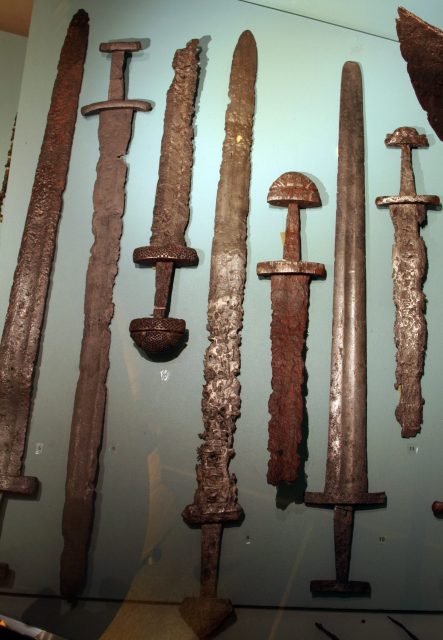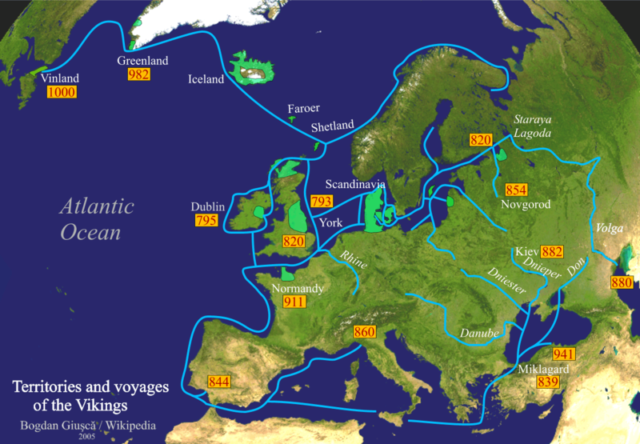The popular beliefs that Vikings were fair haired, wore helmets with horns, were brutal invaders and were always Scandinavian is finally being put to rest thanks to an impressive DNA sequencing of over four hundred Vikings found in burial sites in Greenland and Europe.
According to eurekalert.org, the project has taken over six years and was headed by Professor Eske Willerslev, a Fellow of St John’s College, University of Cambridge and director of The Lundbeck Foundation GeoGenetics Centre, University of Copenhagen who remarked.

“We have this image of well-connected Vikings mixing with each other, trading and going on raiding parties to fight Kings across Europe because this is what we see on television and read in books – but genetically we have shown for the first time that it wasn’t that kind of world.”
DNA from the Viking remains were studied from sites in Ukraine, Greenland, Russia, Great Britain, Scandinavia and Poland and compared with the DNA of almost four thousand modern citizens already on file.
The study has given us new information regarding the Vikings including the facts that many were brunette rather than blond, the early raids were a community affair and relatives often fought together.
Some of the remains found in Viking graves in Scotland were of Scottish descent who had joined the Vikings and in Great Britain at least six percent of the population has Viking DNA.
A Viking grave filled with weaponry in Salme in Estonia was found to have four brothers buried together in a boat along with thirty nine other genetically related people who all probably came from a Swedish town.
The burial showed the men came to a violent end but the burial predates the first documented raid on Lindisfarne, England in 793AD by nearly half a century. There were also Viking skeletons in Orkney and Norway which were found to have genetically British parents.
The testing has also revealed that the Greenland Norse populations were a mixture between Norwegian Scandinavians and people from the British Isles according to the research paper at nature.com.
As it turns out, Vikings were much more isolated than previously believed. While many did set out on expeditions to raid and pillage many more were more interested in trade.

Dr. Ashot Margaryan, Assistant Professor at the Section for Evolutionary Genomics, Globe Institute, University of Copenhagen and an author of the paper said, “We found that Vikings weren’t just Scandinavians in their genetic ancestry, as we analyzed genetic influences in their DNA from Southern Europe and Asia which has never been contemplated before.
Many Vikings have high levels of non-Scandinavian ancestry, both within and outside Scandinavia, which suggest ongoing gene flow across Europe.” The work also found that many Picts, one of Scotland’s earliest people, joined the Vikings without mixing genetically.
The Viking Age covered the period between about 800AD until just before Norman Conquest in England in 1066AD.
The word “Viking” is often associated with the word “pirate” but according to IFLScience.com, the term was used as a verb as in “I’m going a Viking” to reference their overseas raids or trading missions which often went as far as Baghdad in Iraq, North America and Russia.
Historians believe that the Viking raid on monks at the island of Lindisfarne in 793AD began not only the beginning of the Viking migration but the beginning of the bad reputation earned by Vikings because of the violent way monks were killed or taken as slaves and the brazen robbery of the church and decimation of the well known library.

Some academics believe many Vikings were driven to raiding other countries to collect enough goods to survive the harsh Scandinavian winters. Catholic propaganda also had a hand in the bad reputation of the Vikings because of all the raids on monasteries and churches.
The church carried on its slander up until the 19th century when Vikings suddenly became popular in stories that professed their prowess in battle and, unfortunately, the horned helmets and belief that they had poor hygiene habits.
Another Article From Us: The Greatest Archeological Looter Has Finally Been Caught
The Viking Age didn’t come to a sudden end but more likely the Vikings just slowly merged into other societies.
